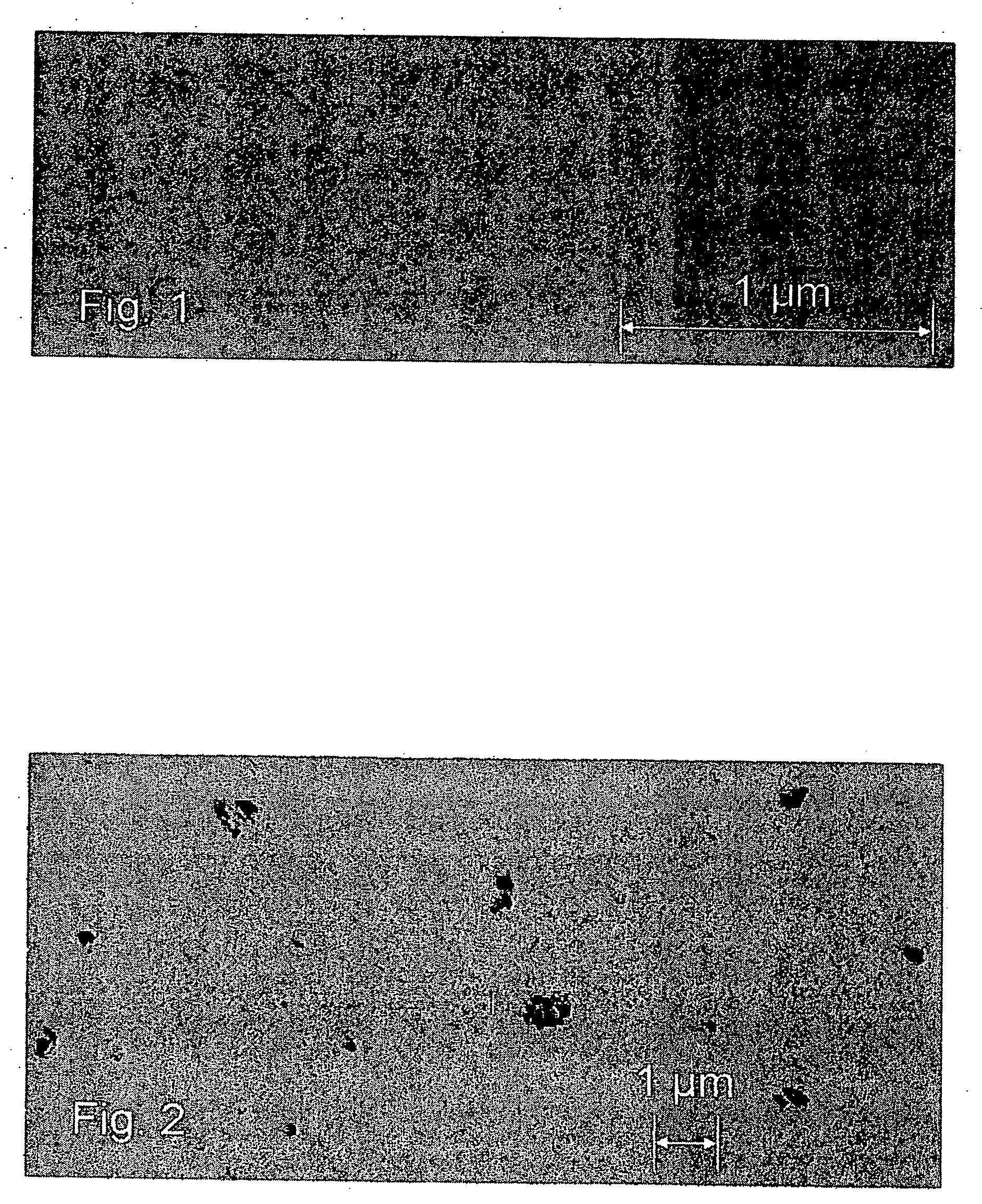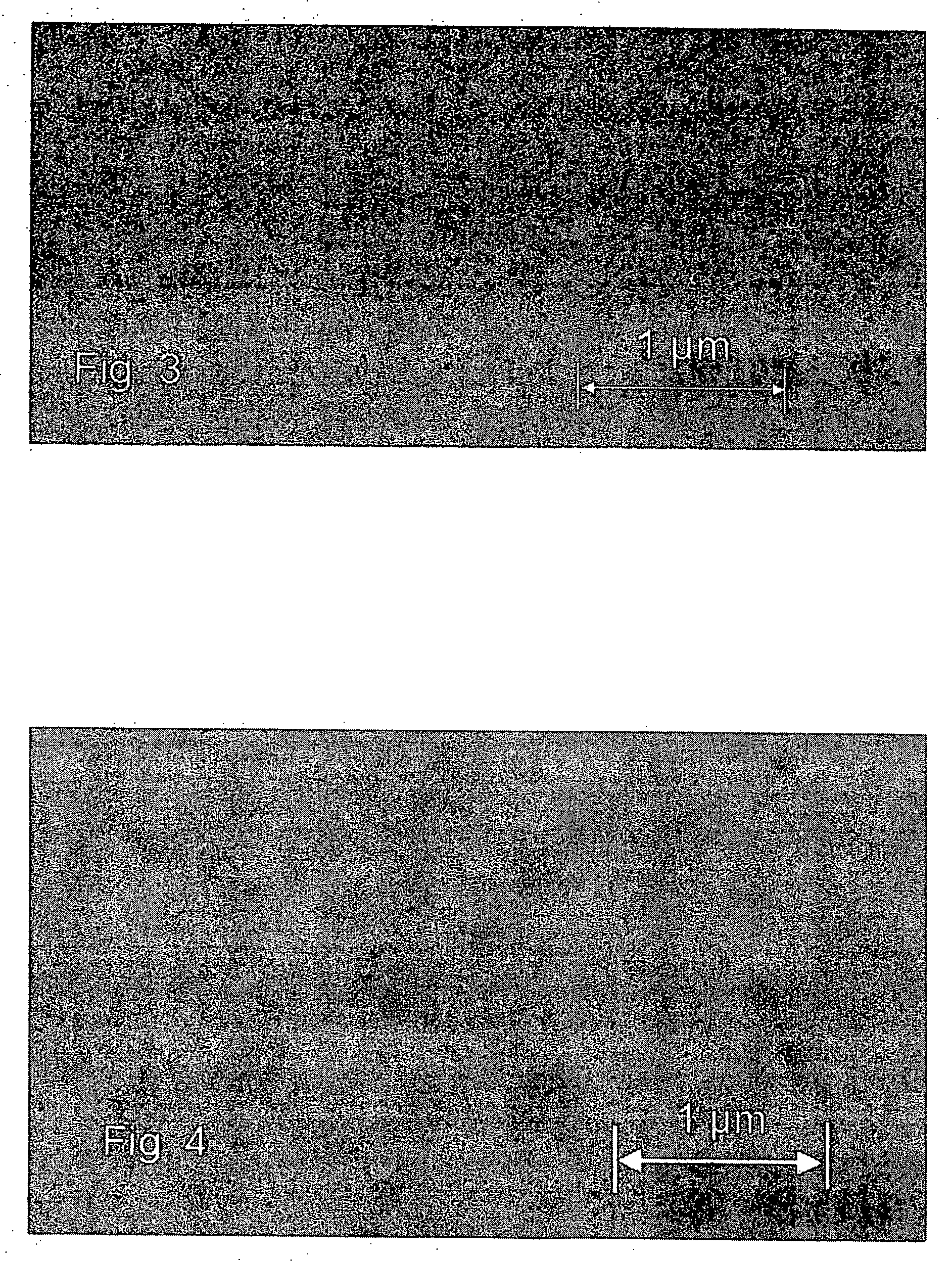Method for depositing nanolaminate thin films on sensitive surfaces
a technology of nanolaminate and sensitive surfaces, applied in the field of thin films, can solve problems such as introducing many new problems
- Summary
- Abstract
- Description
- Claims
- Application Information
AI Technical Summary
Problems solved by technology
Method used
Image
Examples
example 1
The Deposition of TiN from TiCl4 and NH3
[0183] A 200-mm silicon wafer coated with PVD copper was loaded into a Pulsar 2000™ ALD reactor, commercially available from ASM Microchemistry Oy of Espoo, Finland. The substrate was heated to 400° C. in a flowing nitrogen atmosphere. The pressure of the reactor was adjusted to about 5 mbar by the mass flow controller on the nitrogen line and a vacuum pump. Next, a TiNx layer was grown by ALD from sequential pulses of TiCl4 and NH3 that were separated by inert nitrogen gas.
[0184] One deposition cycle consisted of the following steps: [0185] TiCl4 pulse, for 0.05 s [0186] N2 purge for 1.0 s [0187] NH3 pulse for 0.75 s [0188] N2 purge for 1.0 s
[0189] This cycle was repeated 300 times to form about a 5-nm TiNx film. The growth rate of the TiNx film was about 0.17 Å / cycle. Then the wafer was unloaded from the reactor for analysis. Four-point probe and Energy Dispersive Spectroscopy (EDS) measurements gave a resistivity of 150 μΩcm.
6TiCl4(g)+8...
example 2
Deposition of WN from WF6 and NH3
[0192] A 200-mm silicon wafer coated with PVD copper was loaded to a Pulsar 2000 ALD reactor. The substrate was heated to 400° C. in a flowing nitrogen atmosphere. The pressure of the reactor was adjusted to about 5 mbar by the mass flow controller on the nitrogen line and a vacuum pump. Next, a WNx layer was grown by ALD from sequential pulses of WF6 and NH3 that were separated by inert nitrogen gas.
[0193] One deposition cycle consisted of the following steps: [0194] WF6 pulse for 0.25 s [0195] N2 purge for 1.0 s [0196] NH3 pulse for 0.75 s [0197] N2 purge for 1.0 s
[0198] This cycle was repeated 70 times to form about a 5-nm WNx film. The growth rate of the WNx film was about 0.6 Å / cycle. Then the wafer was unloaded from the reactor for analysis.
[0199] Etch damage to the copper film was visible even under an optical microscope because of the nitride process. A lot of HF was evolves from the process (R38). HF may attack the copper surface (R39). ...
example 3
Deposition of WCx with a Gettering Compound
[0200] A 200-mm silicon wafer coated with PVD copper was loaded into a Pulsar 2000™ ALD reactor. The substrate was heated to about 400° C. in a flowing nitrogen atmosphere. The pressure of the reactor was adjusted to about 5 mbar by the mass flow controller on the nitrogen line and a vacuum pump. A thin film rich in tungsten metal was grown by ALD from sequential pulses of WF6 and triethyl boron (TEB), which were separated by inert nitrogen gas.
[0201] One deposition cycle consisted of the following steps: [0202] WF6 pulse for 0.25 s [0203] N2 purge for 1.0 s [0204] TEB pulse 0.05 for s [0205] N2 purge for 1.0 s
[0206] This cycle was repeated 70 times to form about a 5-nm W-rich tungsten carbide film. The growth rate of the thin film was about 0.6 Å / cycle. Then the wafer was unloaded from the reactor for analysis. No corrosion of copper was observed by Scanning Electron Microscopy (referred to as SEM hereinafter). The exact reaction mechan...
PUM
| Property | Measurement | Unit |
|---|---|---|
| thickness | aaaaa | aaaaa |
| voltage | aaaaa | aaaaa |
| thickness | aaaaa | aaaaa |
Abstract
Description
Claims
Application Information
 Login to View More
Login to View More - R&D
- Intellectual Property
- Life Sciences
- Materials
- Tech Scout
- Unparalleled Data Quality
- Higher Quality Content
- 60% Fewer Hallucinations
Browse by: Latest US Patents, China's latest patents, Technical Efficacy Thesaurus, Application Domain, Technology Topic, Popular Technical Reports.
© 2025 PatSnap. All rights reserved.Legal|Privacy policy|Modern Slavery Act Transparency Statement|Sitemap|About US| Contact US: help@patsnap.com



